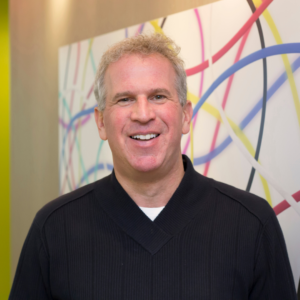An 8-pronged wellness approach
A community has to be passionate to become a Vital Life Community, stresses Bill Witte, founder of Vital Nation, its sponsoring organization. “They have to want it dearly, understand that senior living is not what it used to be and believe that their lives and healthcare costs are worth this,” Witte says. “The idea that we can reverse the aging process is new, and only recently have we had the research and efficacy from multiple national institutions to allow us to build a lifestyle around this.”
Vital Life strives to provide a best practice blueprint for wellness in senior living communities, encouraging all residents, employees and management to be involved and accountable. The program addresses health in a holistic way, covering these eight areas of wellness: environmental, nutritional, social, spiritual, physical, vocational, intellectual and emotional health.
In May 2011, St. Leonard Franciscan Living Community in Centerville, Ohio, became the first provider in the United States to receive Progressive Wellness Certification from Vital Life. Massage therapists, a chiropractor and an exercise physiologist are among the 20 new employees hired at the senior living community, which is home to 760 residents and 350 employees. Despite this large number of people, St. Leonard still enjoys 60 percent participation in its new wellness program.
“If we can extend the ‘fun and function’ stage of people's lives, and reduce the ‘failure and frailty’ stage, you'll see long-term care costs going down and retention of residents and employees going up,” says Debra Stewart, St. Leonard's Director of Wellness. Stewart explains that St. Leonard's CEO, Tim Dressman, became interested in the Vital Life philosophy when he heard Witte speak at a conference regarding the future of the aging population.
Witte, who is also CEO Emeritus of THW Design, an Atlanta-based architecture firm specializing in continuing care retirement communities, started Vital Nation as a non-profit offshoot of THW-its program and accreditation are free of charge. “My research changed forever how I practiced architecture and planning, realizing that it was about more than bricks and mortar. We needed a holistic program and culture change integrated in a supportive, man-built environment,” Witte says.
Witte and Dressman had mutual beliefs in the importance of transforming aging Americans' culture to make wellness a way of life, not a mandate, thereby improving both quality of life as well as reducing healthcare costs. At the time, St. Leonard was in the beginning phases of master site planning in response to resident requests, and Dressman engaged THW in the process. Coincidentally, Witte and Vital Life were seeking a community to validate their socialization-based wellness design, and they chose St. Leonard.
While its wellness program began at the start of 2010, in September of 2011 St. Leonard opened its new $4 million, 22,000-square-foot holistic Franciscan Wellness Center, showcasing many amenities and architectural features not often associated with continuing care retirement communities. The center includes a day spa, full-service restaurant and bar, aerobics studio, meditation room, fitness room, community banquet room, three-lane lap pool and warm-water therapy pool.
“While we wanted to meet the physical needs of seniors through amenities like the fitness room and pool, it was equally important to provide a place to gather, learn, grow and socialize,” Stewart says. “Through this building, we are fostering a culture that prevents our residents from feeling self-contained to one where they remain a part of the greater community. It has been a miracle to watch it happen.
“Many wellness programs have started and stopped because people find it difficult to accept drastic change. But this is different. This is motivating, vitalizing and inspiring.”
Dressman agrees that the affiliation and support of Vital Life and Vital Nation has been both positive and progressive. “The response has been overwhelming and continues to transform our campus and our community to aging well, enhancing the quality of life and deferring the need for high-cost healthcare,” he says. “I have been approached by at least five different senior living providers about the program and our blog has attracted the interest of 38 countries across the world. It is amazing and inspirational.”
Irene Middleman Thomas is a freelance writer based in Denver. For more information on Vital Life, visit www.vitalnation.org.
Long-Term Living 2011 December;60(12):43
I Advance Senior Care is the industry-leading source for practical, in-depth, business-building, and resident care information for owners, executives, administrators, and directors of nursing at assisted living communities, skilled nursing facilities, post-acute facilities, and continuing care retirement communities. The I Advance Senior Care editorial team and industry experts provide market analysis, strategic direction, policy commentary, clinical best-practices, business management, and technology breakthroughs.
I Advance Senior Care is part of the Institute for the Advancement of Senior Care and published by Plain-English Health Care.
Related Articles
Topics: Articles , Housing











